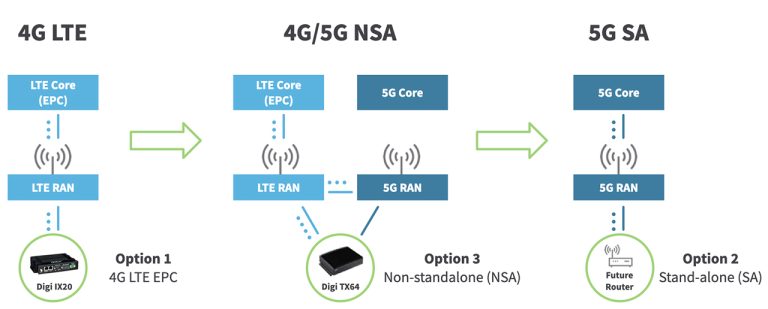Exploring VRx (Video Receiver): Key Functions and Uses
telcomatraining.com – In the rapidly evolving world of technology, Virtual Reality (VR) has emerged as a transformative force, bringing immersive experiences to various sectors. One of the critical components that make VR systems function seamlessly is the Video Receiver (VRx). This device plays a vital role in capturing, transmitting, and displaying video content, thus enhancing the overall user experience. In this article, we will delve into the key functions and uses of VRx and how it contributes to the development of immersive technologies.
What is a VRx (Video Receiver)?
A VRx (Video Receiver) is a device designed to receive, process, and display video signals. It functions as a crucial component in the Virtual Reality ecosystem, allowing the VR headset or other VR hardware to display high-quality, real-time video content. The VRx communicates with video sources, such as cameras, streaming devices, or gaming consoles, ensuring smooth and clear visual experiences for the user.
In the context of VR technology, a VRx works as a receiver of video data, ensuring low latency and high resolution for an immersive experience. Its primary purpose is to manage the transmission of high-definition video feeds from the source to the VR headset, making it a central player in VR applications, including gaming, simulation, training, and entertainment.
Key Functions of a VRx (Video Receiver)
- Video Signal Reception and Processing
The primary function of a VRx is to receive video signals from external devices. These signals can come from various sources, such as a VR-compatible camera, console, or computer. The VRx ensures that these signals are processed and converted into a format that the VR headset or display system can handle. This processing includes ensuring the video is presented in real-time with minimal latency and high clarity.
- Low Latency Transmission
For VR systems to deliver an immersive experience, low latency is critical. High latency can lead to motion sickness and a disjointed VR experience. A VRx is designed to minimize delay by efficiently managing the video feed, ensuring that users experience real-time interactions. The lower the latency, the more realistic the VR experience becomes, whether it’s in VR gaming, training simulations, or virtual tourism.
- Resolution and Frame Rate Management
High-quality video is an essential element of VR experiences. A VRx is responsible for managing the resolution and frame rate of the video feed, ensuring that the content displayed is crisp and fluid. This feature is especially important for high-definition VR applications that require sharp visuals, such as medical simulations or architectural walkthroughs. A VRx ensures that users experience clear, detailed visuals without lag or blurring.
- Adaptation to Various VR Devices
One of the key functions of a VRx is its ability to interface with different types of VR devices, whether it’s a gaming console, PC, or mobile VR setup. It can adapt to various video output formats, ensuring compatibility across a broad range of devices and systems. This versatility allows users to experience VR content across multiple platforms without needing specific hardware configurations.
- Signal Amplification and Enhancement
In some VR setups, the video signals may need to travel long distances between the source device and the receiver. A VRx is designed to amplify and enhance the quality of the signal, ensuring that the video feed remains strong and clear, even over long distances. This function is particularly important in large-scale VR installations, such as those used in theme parks, museums, or enterprise training centers.
Uses of VRx in Different Industries
- Entertainment and Gaming
The most popular use of VRx is in the entertainment and gaming industries. In VR gaming, the VRx helps transmit high-quality video from the gaming console or computer to the VR headset, ensuring that users are fully immersed in the game world. It supports smooth, real-time rendering of the game environment, allowing gamers to interact with the virtual world seamlessly.
- Training and Simulation
VR is widely used in training programs for various sectors, including aviation, medicine, and military. In these applications, VRx ensures that video feeds from simulation devices are transmitted to VR headsets with minimal delay and maximum clarity. For example, flight simulators use VR to recreate real-life flying scenarios, with the VRx playing a pivotal role in delivering high-resolution video content.
- Healthcare and Medical Field
In the medical field, VRx devices enable healthcare professionals to use VR for surgeries, diagnostics, and therapy. Surgeons, for example, use VR simulations to practice complex procedures. A VRx ensures that the video feed is precise and clear, which is vital for training purposes or during actual procedures where a detailed visual experience is necessary.
- Virtual Tourism and Education
With the advent of virtual tourism, VRx enables users to explore global destinations from the comfort of their homes. The device transmits live video from remote locations, providing users with an immersive travel experience. Similarly, in education, VR technology can bring virtual classrooms to life, with VRx playing a significant role in delivering engaging and interactive content to students.
Conclusion
The VRx (Video Receiver) plays a pivotal role in the VR ecosystem by ensuring high-quality video transmission with minimal latency and maximum clarity. It serves various industries, from gaming and entertainment to healthcare and education, making VR a versatile and impactful technology. As VR continues to evolve, the role of devices like the VRx will become even more critical, enabling enhanced user experiences and new possibilities across multiple fields.
By understanding the core functions and applications of VRx, users and businesses can harness the full potential of VR technology for immersive and interactive experiences.







